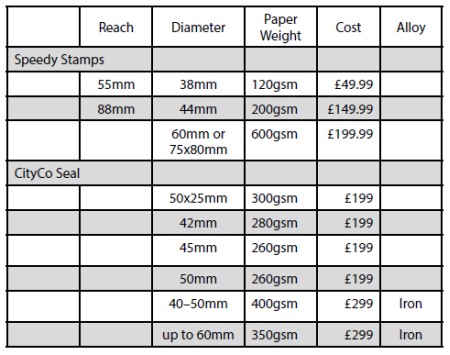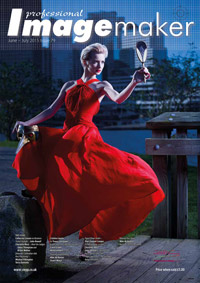articles/Printing/Making-Your-Mark-page8
Making Your Mark - part 8 of 1 2 3 4 5 6 7 8 9 10
by Mike McNamee Published 01/06/2015

Seals - Making an Impression
Seals have been used for time immemorial. The Mesopotamians carved limestone cylinders that were then used to make impressions into clay. Signet rings were introduced by the Egyptians and tended to show just hieroglyphics, indicating the name of the king. These were then impressed into wax and while they may have been relatively easy to forge, the potential loss of your head probably reduced the number of forgers!
Seals were often impressed into documents with or without wax and often a ribbon was encapsulated by the wax to further preserve the integrity of the document. An unbroken seal was a sign that the document was from the bearer of the seal and untampered. Wax seals ranged in size from signet-ring size up to the diameter of a small dinner plate.
The sealing device itself has always been valued. Today's company seals (not strictly needed since 1989) are usually kept in the company safe and a log book records when it is taken out and used. The Lord Privy Seal's job was to look after the King's seal and this office goes back to the reign of King John. On a more mundane level MOT certificates used to carry the seal impression of the issuing garage and, again, these were valuable tools. The ultimate marriage that we have seen combining the old and the new is a USB stick with the cover and the body wax-sealed together. There are lots of seal-makers in the UK and we approached a couple for advice during our research. They may be found at: wwwcitycoseals.co.uk and www.speedystamps.co.uk.
Adding an embossed seal to a wall portrait or limited edition print is a neat and impressive way to complete the curation of the image. Within limits you can have almost any shape of motif in your seal, along with a few lines of writing. The writing should be at least 2mm in height, preferably in upper case letters and using a simple sans serif font - Arial Rounded is perfect.
You have a choice of circular or rectangular shape, the size of impression depending on the capability of the press and the weight of paper to be impressed. The reach of the press (ie how far into the print the mark is made) also affects the design, cost and weight of the press. Don't forget that you can have the motif set at right angles so that the press may be used from the side of the print. A press is normally equipped with only one die set; changing them is difficult, but can be done by returning the press to the maker.
The sizes and estimated costs of presses and dies are set out in the table below. More complex patterns such as coats of arms cost more and would need to be quoted individually, simple arrangements can normally be designed on the maker's website. Otherwise a crisp JPEG, PDF or Illustrator image will suffice. In our experience the alloy-bodied presses are a bit weak; we would always go for the heavier, more robust, cast-iron ones - quite a lot of force is required to impress an art paper.
Please Note:
There is more than one page for this Article.
You are currently on page 8
- Making Your Mark page 1
- Making Your Mark page 2
- Making Your Mark page 3
- Making Your Mark page 4
- Making Your Mark page 5
- Making Your Mark page 6
- Making Your Mark page 7
- Making Your Mark page 8
- Making Your Mark page 9
- Making Your Mark page 10
1st Published 01/06/2015
last update 09/12/2022 14:56:21
More Printing Articles
There are 10 days to get ready for The Society of Photographers Convention and Trade Show at The Novotel London West, Hammersmith ...
which starts on Wednesday 14th January 2026





